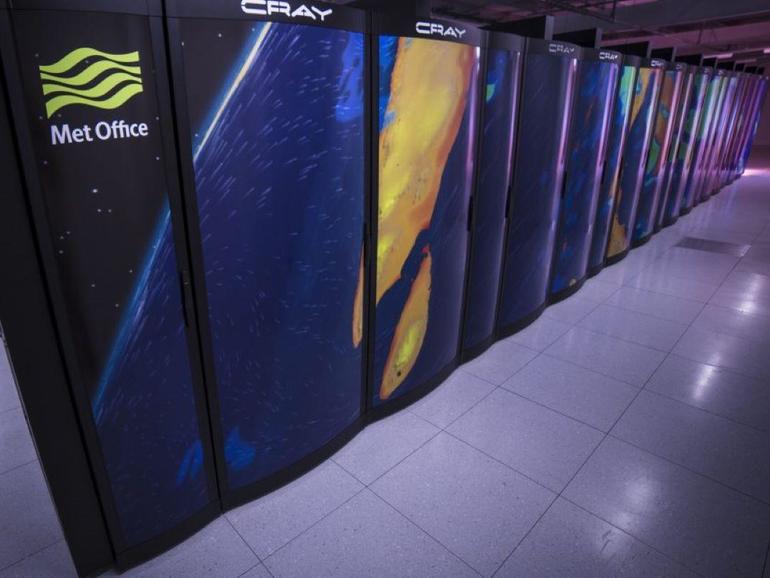Scientists hope that the supercomputer will enable more accurate warnings of severe weather, while also improving the models that predict the impact of climate change on the planet.
Image: Microsoft
The UK’s national weather service the Met Office is refreshing its compute capabilities thanks to a new deal with Microsoft to build a billion-dollar supercomputer that is expected to boost the precision of weather forecasting and climate change modelling.
With a total bill reaching £1.2 billion ($1.7 billion), and which will be government-funded, Microsoft will be tasked with upgrading the Met Office’s current supercomputing capabilities over a ten-year period, with the new system expected to become operational in July 2022.
This is the largest investment in the 167-year long history of the Met Office, and scientists hope that the supercomputer will enable more accurate warnings of severe weather, while also improving the models that predict the longer-term impact of climate change on the planet.
The new system, which will be built in the South of England, will be in the top 25 supercomputers in the world, and is expected to be one of the most advanced devices dedicated to weather and climate, according to Microsoft.
Clare Barclay, CEO at Microsoft UK, said: “The potential of the deep expertise, data gathering capacity and historical archive of the Met Office, combined with the sheer scale and power of supercomputing on Microsoft Azure will mean we can improve forecasting, help tackle climate change and ensure the UK remains at the forefront of climate science for decades to come.”
Microsoft will provide supercomputing-as-a-service by integrating the company’s cloud platform Azure with four HPE Cray EX supercomputers, each of which will constitute a separate quadrant of the overall system to ensure operational resilience.
The combined system will have a total of over 1.5 million AMD processor cores and achieve over 60 petaflops – that is, the supercomputer will be able to carry out 60 quadrillion calculations per second. As Microsoft improves the device over the next decade, these capabilities are expected to increase.
The supercomputer will also store and process nearly four exabytes of data, which Barclay described as over four million times as much data as most modern-day laptops.
Scientists will see an initial six-fold increase in compute capacity compared to the Met Office’s current Cray XC40 supercomputing system, and it is expected that a further three times increase in capacity will occur from 2027 as upgrades are carried out.
“This will be a unique capability that will keep not just the Met Office but the UK at the forefront of environmental modelling and high-performance computing,” said Penny Endersby, chief executive of the Met Office. “Working together, we will provide the highest quality weather and climate datasets and ever more accurate forecasts that enable decisions to allow people to stay safe and thrive.”
Once it is up-and-running, the new supercomputer will be applied to various modelling and prediction use-cases. It will be used for short-term and local-scale weather forecasting based on more sophisticated simulations that will inform emergency preparedness for extreme storms, floods and snow.
For example, the Met Office’s compute capabilities were previously leveraged in 2019 when heavy rains in central England created fears that a dam in the Toddbrook Reservoir would collapse. The organization worked with emergency services to provide short-term and long-term weather conditions, and inform those on the ground on the possibility of further rainfall impacting water levels in the dam.
With more detailed models and better anticipation of future scenarios, the new supercomputer could also help urban planners improve risk-planning by changing city designs, such as public transport infrastructure. The aviation industry will equally benefit from more accurate weather forecasts, which will increase safety and fuel efficiency.
The Met Office will be able to predict with greater precision how climate change might affect ecosystems, which the organization argued will provide businesses with new opportunities to innovate. The investment, in fact, is expected to result in financial benefits totaling up to £13 billion ($18 billion) over its ten-year lifespan.
